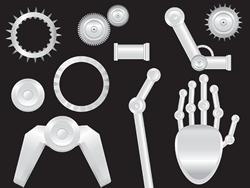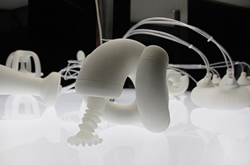CMU's interactive tool helps novices and experts make custom robots
MIT Builds Invisible Fish Grabbing Robot
Raspberry Pi And MATLAB based 3D Scanner
Global Expert Platform for Production Services in Additive Manufacturing
Is Velo3D Plotting a 3-D Printed Robot Revolution?
3DR Holdings, LLC and Rising Media, Inc. to Host Singapore's Premier 3D Printing and Robotics Event; January 26-27, 2016 at Suntec Singapore Convention & Exhibition Centre
Molding Conference 2016 Announces Complete Technical Program
CES 16 - NinjaTek Announces Two New 3D Printing Materials Designed for Industrial Applications
CES 16 - MarkForged Leads Explosive Growth in 3D Printing Technologies for Manufacturing
3D Printing of Motors and Electronics
Robotic Additive Manufacturing Platform for 3D Printing Composite Parts
3D Printing and Acoustics: Rapid Prototyping of Sound Diffusers
Special Tradeshow Coverage for FABTECH 2015
The 3D Printshow - Learn About 3D Printing
Soft Robotics Project Exo-Biote 3D Prints Living Movement
Records 16 to 30 of 113
First | Previous | Next | Last
Featured Product










